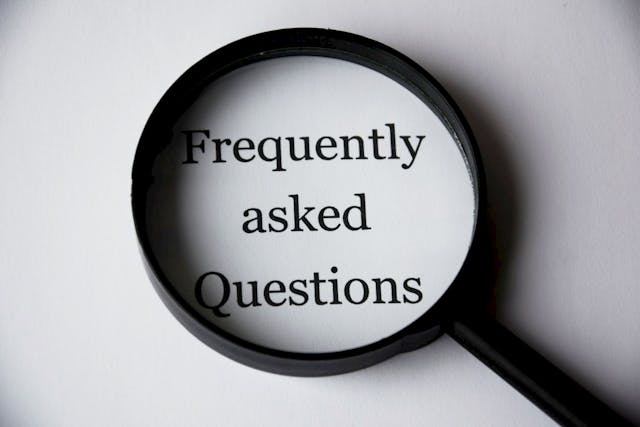People now act before they ever visit a site. In-search actions are direct steps users take right inside search results. They book tables, read reviews, get directions, or call businesses instantly. This shift has changed search behavior fast. Brands must reach people where choices happen first. Acting beyond the website puts you ahead. For example, restaurants get reservations through Google. Local small businesses gain visits with updated listings. Above all, these moments build visibility and trust without extra clicks. Optimizing your brand for in-search actions helps you stay seen and chosen first. Stay ready where people decide.
Understanding Today’s Search Intent
People now search with clear goals instead of vague clicks. User intent shows what someone wants to do right now, unlike old searches that just asked questions. Click-to-call, directions, and instant bookings prove actions happen without visiting a page. As a matter of fact, intent shapes conversion more than keywords alone. Brands studying this data learn what buyers need before they land on a site. Phone searches lead to local visits within hours. Voice search also drives quick actions. Shoppers want answers fast, so brands must respond in search results.
Trends show more people expect instant results. Quick maps, direct calls, or booked tables happen right from a search page. Knowing this helps brands show up at the right time. Staying visible where people decide builds trust quickly. Watch what people do, not just what they type, and adapt to win those moments first.
The Rise of Zero-Click Searches
Zero-click searches happen when people get answers without visiting any site. They find what they need straight from the search page. In contrast, old search strategies pushed people to click links for info. Now, rich results, like featured snippets or quick answers, give facts fast. People book appointments, check reviews, or get directions right there. This brings clear benefits for users but mixed results for brands. It can build trust and visibility, yet traffic drops if clicks disappear. For example, a restaurant may get more bookings from a direct call button but see fewer page visits.
With this in mind, brands should craft content that feeds these rich results. Staying visible helps you catch action moments. Keep the information updated so your listings stay useful. Be ready for voice searches, too. Zero-click means the first answers win. Use every feature to turn searches into real actions that count.
Optimize Local Listings for In-Search Actions
People now take action without ever visiting a business’s website. For this reason, brands must treat platforms like Google Search and maps-based results as extensions of their digital presence. A strong Google Business Profile builds trust fast. Keeping hours, addresses, and contact details correct drive visits. Using Google Maps as a marketing tool helps people find you and act right away. Reviews and Q&A shape first choices.
In order to get clicks-to-call or directions, every detail must stay fresh. Adding photos shows what makes you different. Attributes and FAQs answer common questions before someone calls. Local SEO supports all this work daily. Above all, updated profiles grab attention where people decide. In short, strong listings turn searches into bookings or visits. This way, your brand stays ready for action without waiting for a website click. Act where buyers act and make every search count.

Optimizing Your Brand for In-Search Actions: Craft Content That Triggers Actions
Content must answer questions fast to win featured snippets. Short, clear answers help you appear above other results. How-to guides solve common problems and boost trust. Similarly, plan content for voice searches to grab quick spoken queries. Add clear call-to-action phrases to guide what people do next. Phrases like “Book Now” or “Call Today” drive actions without extra steps. Strong meta descriptions also pull people in. Use short, direct language that makes someone want to click or act. Keep every answer fresh and helpful. In short, clear, action-focused content turns search traffic into real steps that help your brand grow.
Leverage Structured Data for Better Engagement
Search engines read structured data to understand content better. This extra information helps your listings stand out in results. Rich snippets and action buttons grab attention fast. They show prices, ratings, or booking links before anyone clicks. With this in mind, add markup for bookings and product guide actions right in search results. This simple code signals what your page offers. Use tools like Google’s Rich Results Test to check if your markup works well. Clear data makes it easy for search engines to display more details.
Another key point is to always monitor how these features perform. Watch clicks, bookings, or calls linked to rich results. Update the markup if you add new services or products. Small updates keep your information fresh and visible. Structured data turns basic listings into action-ready results. In short, show what people want before they visit your page and help them act sooner.
Social Proof and Trust Signals in Search
People trust what others say before they trust ads. Ratings and reviews show real experiences that help new buyers decide. Products with five or more reviews are 270% more likely to be purchased. For instance, a one-star increase in a restaurant’s Yelp rating can bring about a 5–9% increase in revenue. On the other hand, accreditations and awards prove you meet strong standards. Trust signals like these push people to click to call or visit without delay. Add user-generated content to highlight real stories. Photos or testimonials work well in search listings. Keep reviews fresh, so they always reflect current service. Reply to feedback to show you care and listen. Updated trust signals build confidence fast. In short, real feedback and visible proof turn searches into actions that help your business grow every day.
Tracking and Measuring In-Search Actions
Brands must track results to prove what works. You can use tools to measure in-search conversions like calls, bookings, or map clicks. Nevertheless, compare this data with on-site metrics to see the full picture. Look at how many people use click-to-call, ask for directions, or book directly in search. Adjust your strategy often based on what the numbers show. Drop what does not drive actions and improve what does. Watch important KPIs like call volume, booking rate, and local listing views. Keep reports simple and update them each month. Strong tracking shows if your plan for optimizing your brand for in-search actions works. In short, clear data helps you win more actions right where people search.
Make In-Search Actions Work for You
Acting beyond your site keeps you ahead. Use optimizing your brand for in-search actions to turn searches into real steps. Focus on local listings, structured data, and trust signals. Measure results often. In short, meet people where they decide, and grow your reach before they ever click through.


